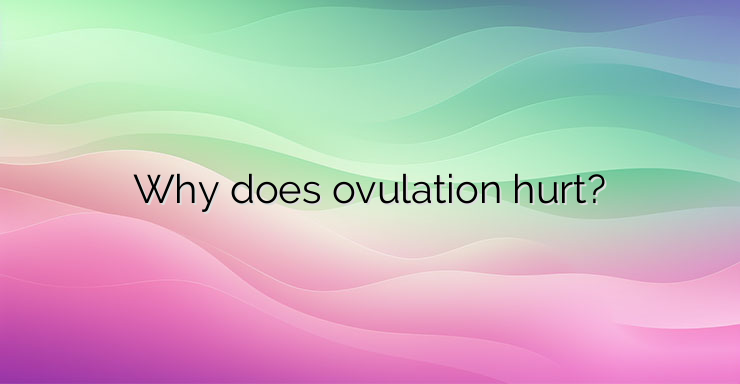What is ovulation? Ovulation is a process in which an egg mature for fertilization is released from the ovaries. This process takes place every month in the middle of the monthly cycle in women who are of reproductive age. Every third woman of reproductive age complains that her ovulation is painful. Usually, this pain does not require medical attention and is not dangerous, but if the pain becomes unbearable and occurs every month, then a doctor should clarify the cause and prescribe the appropriate therapy. It is possible for the obstetrician-gynecologist to prescribe hormonal contraceptive pills in order to stop ovulation. What causes the pain? Eggs grow in ovarian follicles. These follicles are filled with fluid. In order to release the egg, this follicle must stretch and burst. It is this stretching and bursting that creates the sensation of pain during ovulation. What are the symptoms when ovulation occurs? Symptoms are more abundant vaginal discharge, lower back pain, there may be slight genital bleeding and nausea if the pain is stronger. The pain can be sudden and sharp. It can be relieved at rest and aggravated by movement. It can be tested during the day at intervals, and it can be online all day. Where is the pain felt? The pain is localized in the lower part of the abdomen on the left or right. Each month, the ovaries take turns to ovulate. If the left ovary ovulates, the pain is felt only on the left side. In some women, the pain occurs every month, which means that the pain is caused by only one ovary. It should subside within 48 hours of ovulation. When and why should you seek medical attention? If the pain becomes stronger and after 48 hours has not disappeared or decreased, a doctor should be consulted. Possible causes of the appearance and can be: Cysts. The presence of a cyst can cause cramping, bloating and nausea. It is important to determine the type of cyst, and their timely treatment would prevent complications and infertility. Adhesions. They can appear after cesarean or gynecological abdominal surgery, infection in the uterus, dilation and curettage. Adhesions can be detected after a preventive examination. Endometriosis. In endometriosis, tissue that is similar to the inside of the uterus is present, grows outside of it, and covers other adjacent organs in the pelvis. This condition is painful. Sexually transmitted infections. In addition to pain, they may also have a high temperature, burning during urination, and profuse genital discharge with a pungent odor. Certain medical procedures or childbirth can also cause infections, and sometimes untreated urinary tract infections can create pelvic pain. Most menstruating women know that around the 14th day of the menstrual cycle, they may experience discomfort because ovulation is imminent. Apart from ovulation, however, the pain can also be due to various other conditions and diseases.Any change during the menstrual cycle should be shared with a doctor and preventive examinations should be carried out annually. References 1. https://www.healthline.com/health/pregnancy/ovulation-pain#takeaway 2. https://my.clevelandclinic.org/health/diseases/9134-ovulation-pain-mittelschmerz


Leave a Reply